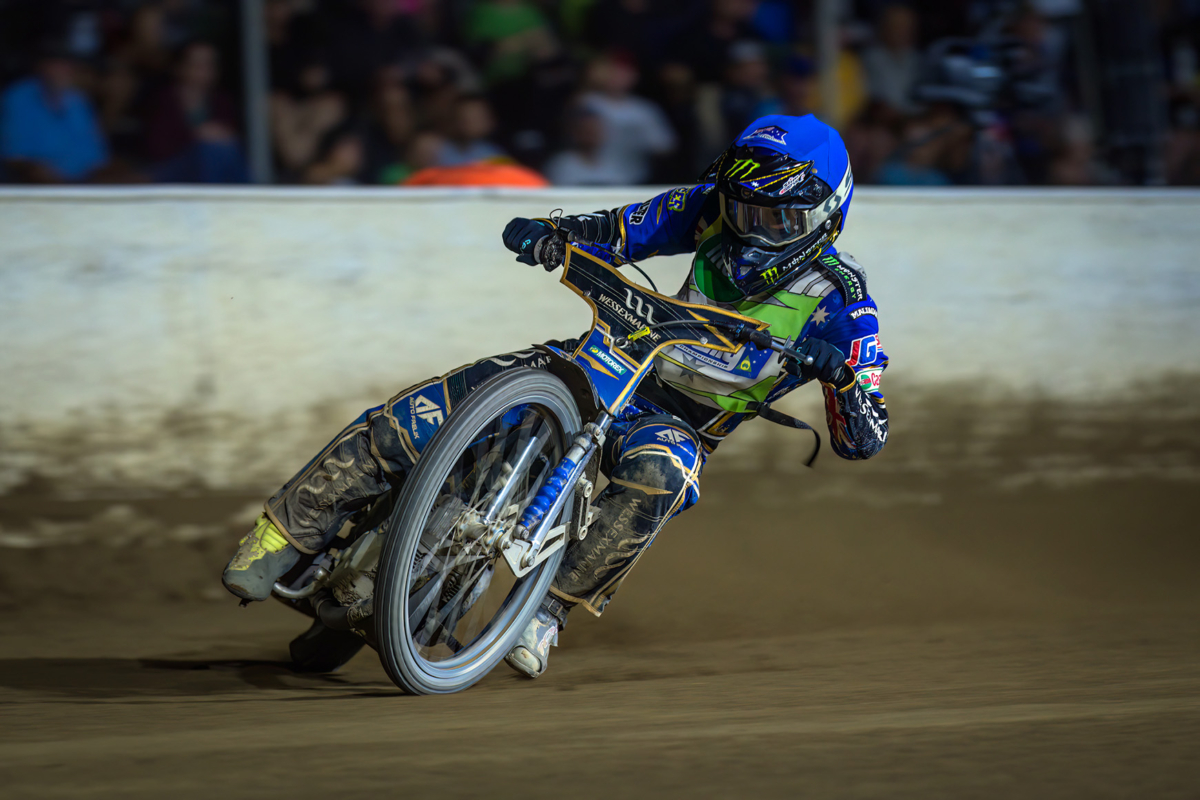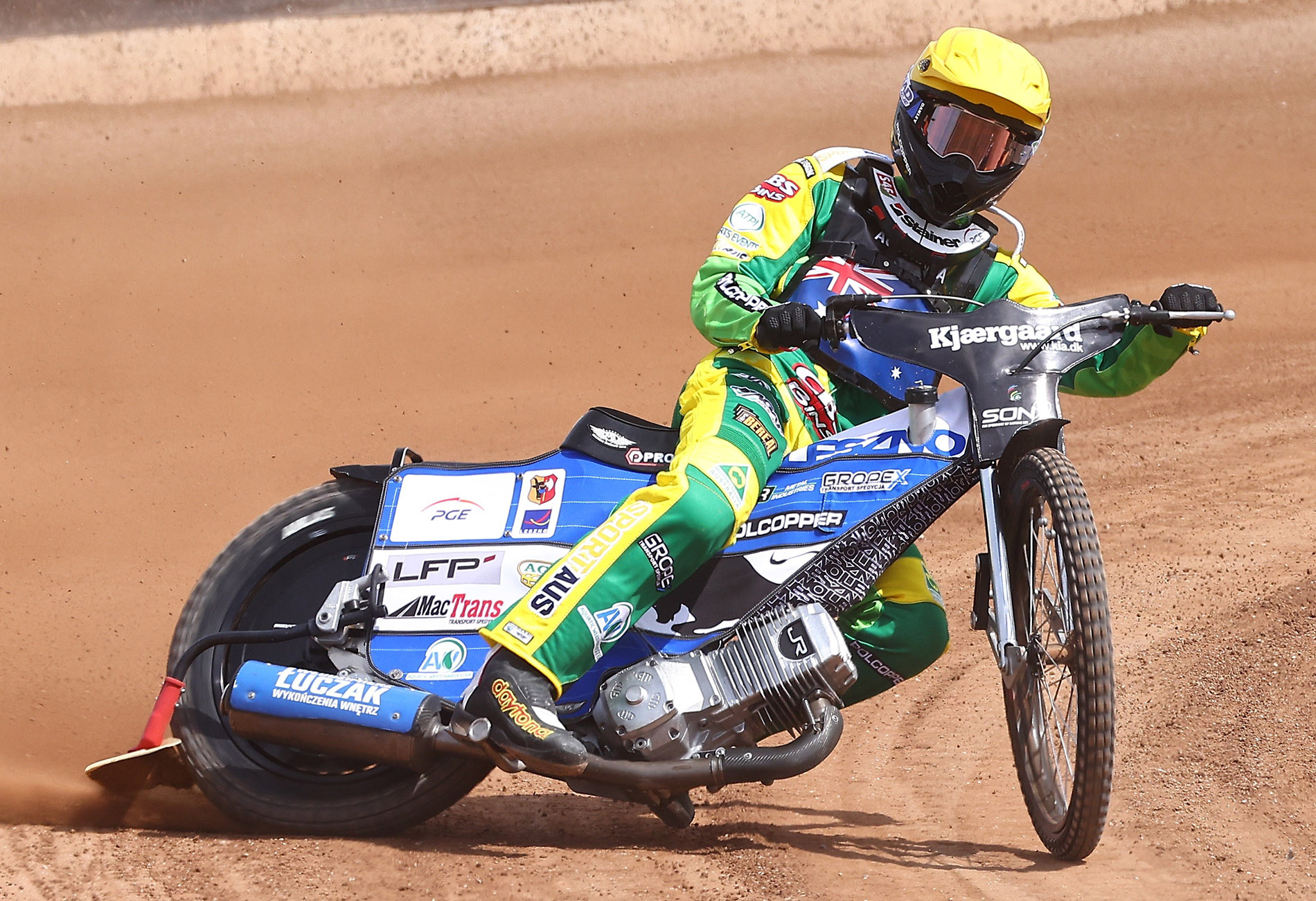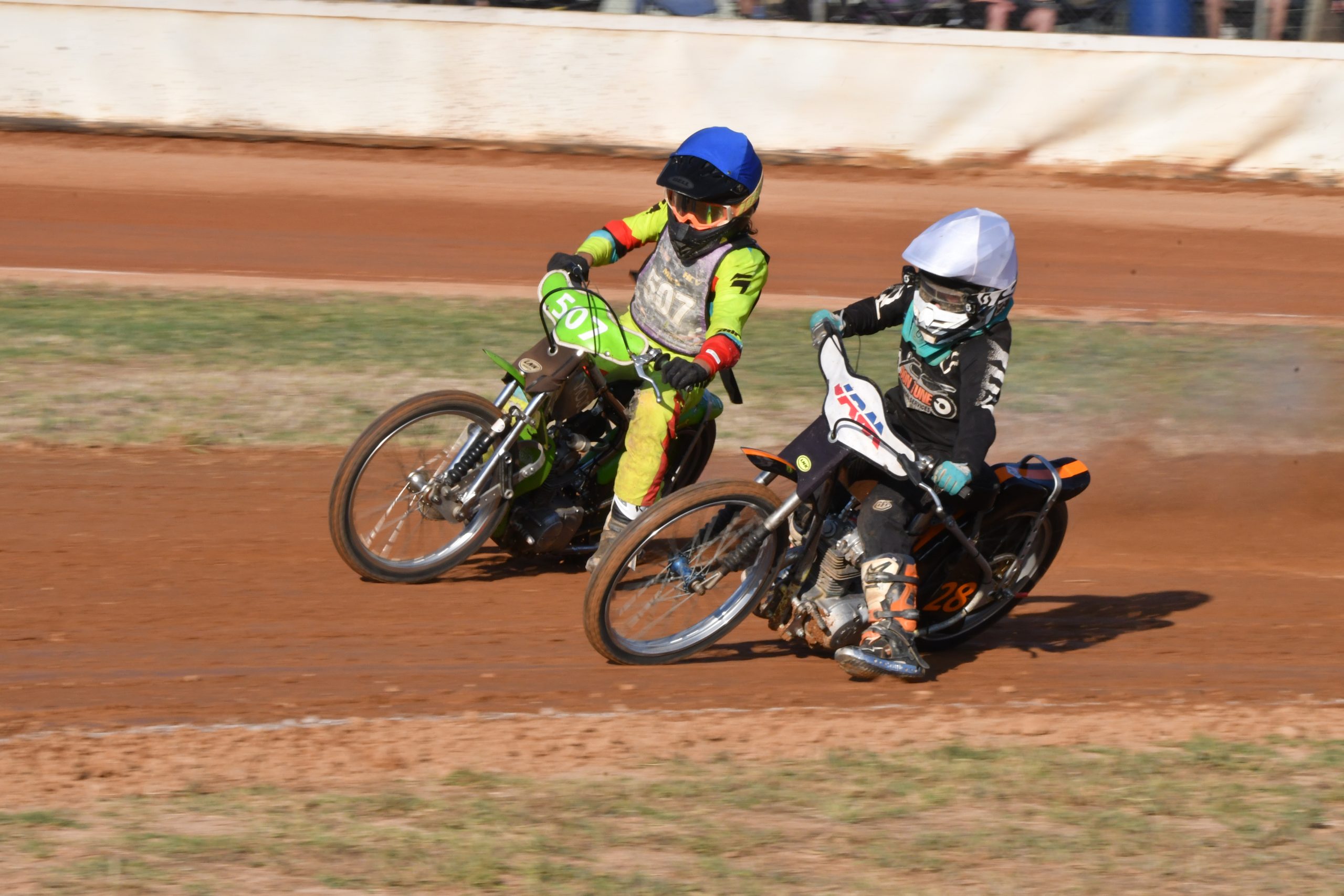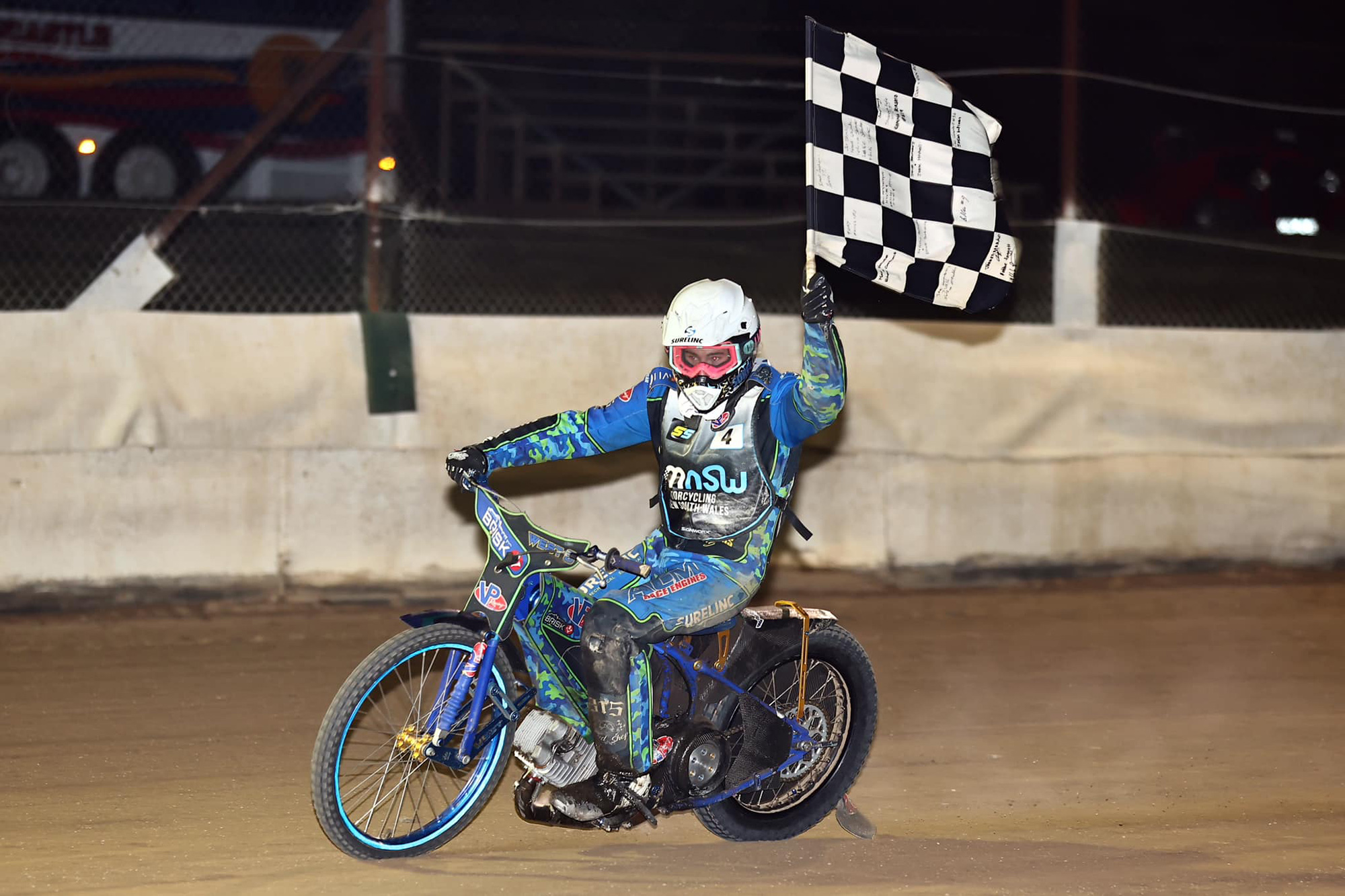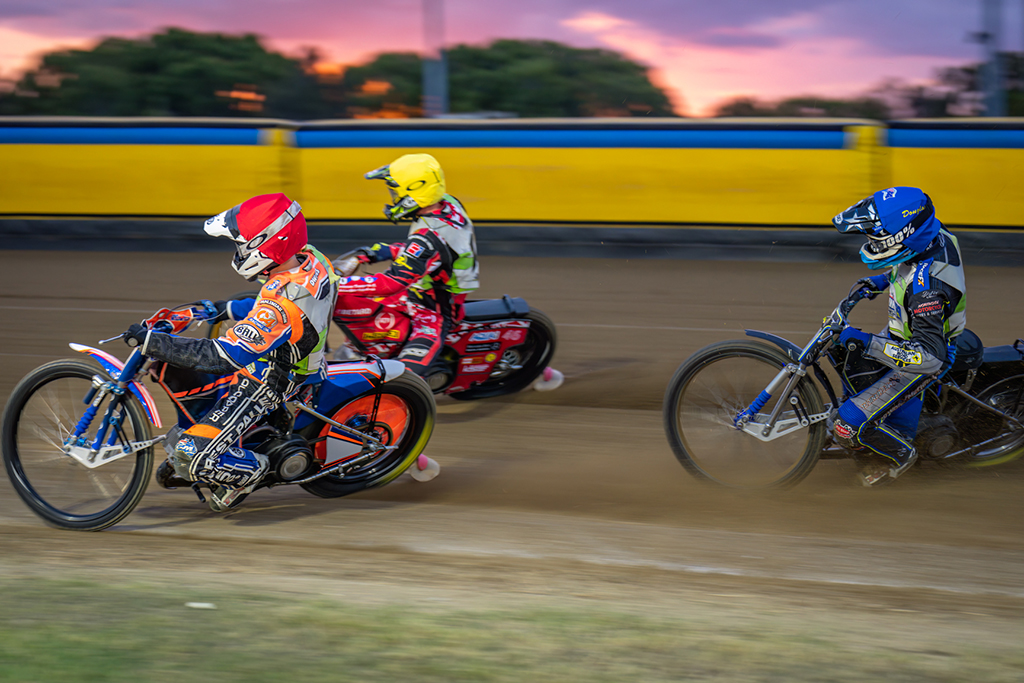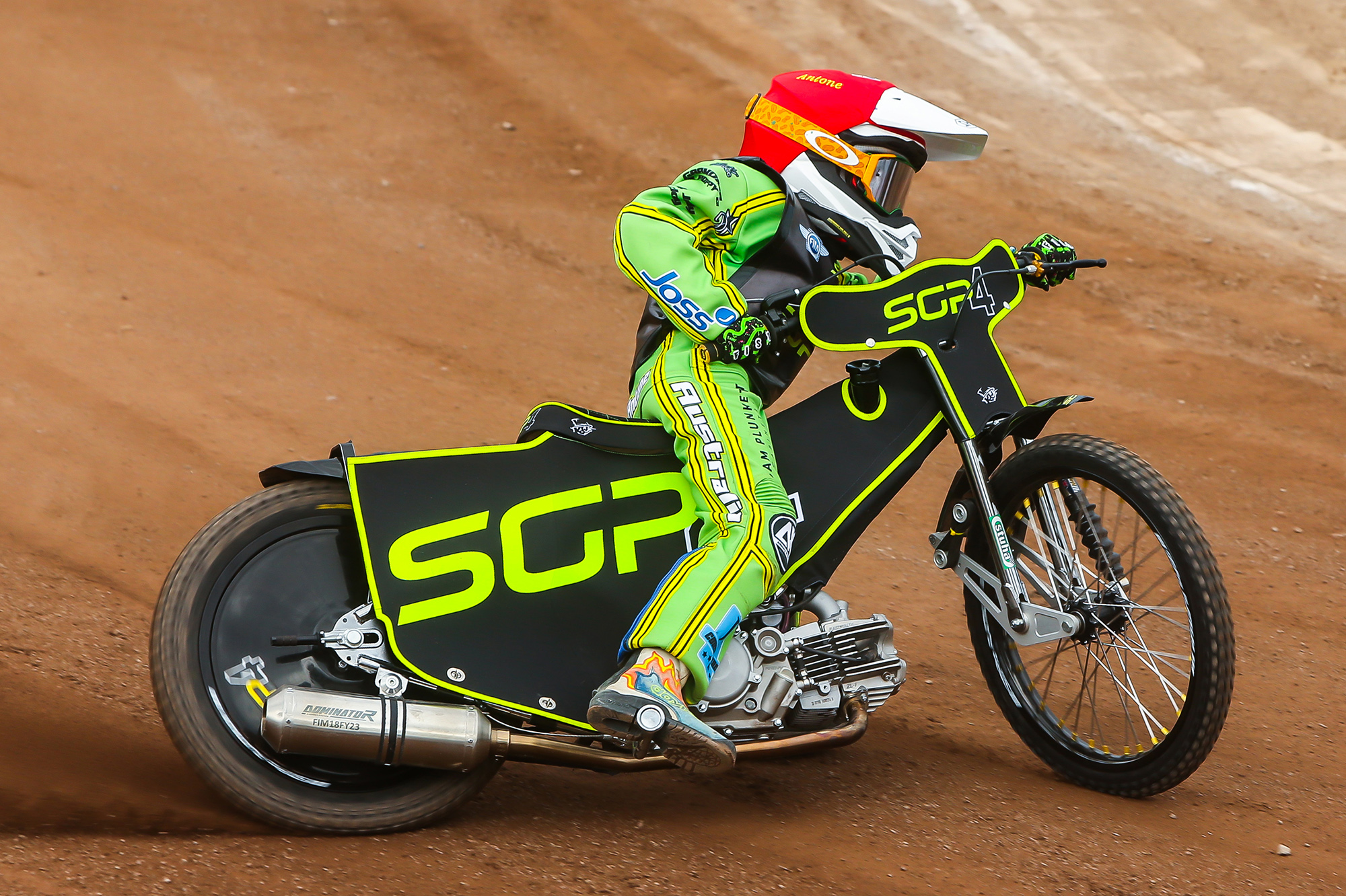ABOUT SPEEDWAY
ALL YOU NEED TO KNOW ABOUT THE AUSTRALIAN SPEEDWAY CHAMPIONSHIPS
Motorcycle Speedway, usually referred to as ‘Speedway’, is a motorcycle sport involving four and sometimes up to six riders competing over four anti-clockwise laps of an oval circuit. The motorcycles are specialist machines which use only one gear and have no brakes; racing takes place on a flat oval track usually consisting of dirt, loosely packed shale, or dolomite (mostly used in Australia and New Zealand). Competitors use this surface to slide their machines sideways, power sliding or broadsiding into the bends. On the straight sections of the track, the motorcycles reach speeds of up to 70 miles per hour (110 km/h).
The exact origins of the sport are unknown but there is evidence of a type of speedway racing being practised in the USA before the First World War and in Australia in the late 1910s and early 1920s. There are now both domestic and international competitions in a number of countries including the Speedway World Cup whilst the highest overall scoring individual in the Speedway Grand Prix events is pronounced the world champion. Speedway is popular in central and northern Europe and to a lesser extent in Australia and North America. A variant of track racing, speedway is administered internationally by the Fédération Internationale de Motocyclisme (FIM). Domestic speedway events are regulated by FIM-affiliated national motor sport federations.
The early history of speedway race meetings is a subject of much debate and controversy. There is evidence to show that meetings were held on small dirt tracks in Australia and the United States before World War I. An American rider named Don Johns was known to have used broadsiding before 1914. It was said that he would ride the entire race course wide open, throwing great showers of dirt into the air at each turn. By the early 1920s, Johns’ style of cornering was followed in the US – where the sport was initially called “Short Track Racing” – by riders such as Albert “Shrimp” Burns, Maldwyn Jones and Eddie Brinck. Consequently, two long-held and common beliefs are incorrect: first, that New Zealand-born rider Johnnie Hoskins invented the sport, and second, that the first meeting was held on 15 December 1923 at West Maitland Showground, in the Hunter Region of New South Wales, Australia. For instance, a contemporary newspaper report of this meeting, in the Maitland Mercury, mentions previous meetings.
The first meeting in the United Kingdom took place at High Beech on 19 February 1928. There are, however, claims that meetings were held in 1927 at Camberley, Surrey and Droylsden, Lancashire. Despite being described as “the first British Dirt Track meeting” at the time, the meeting at Camberley on 7 May 1927 differed in that the races were held in a clockwise direction. Races at Droylsden were held in an anti-clockwise direction but it is generally accepted that the sport arrived in the United Kingdom when Australians Billy Galloway and Keith McKay arrived with the intention of introducing speedway to the Northern Hemisphere. Both were featured in the 1928 High Beech meeting. The first speedway meeting in the UK to feature bikes with no brakes and broadsiding round corners on loose dirt was the third meeting held at High Beech on 9 April 1928, where Colin Watson, Alf Medcalf and “Digger” Pugh demonstrated the art for the first time in the UK. Proto speedway was staged in Glasgow at the Olympic Stadium (Glasgow Nelson) on April 9, 1928 and the first fully professional meeting was staged at Celtic Park on April 28, 1928. The first meeting in Wales was staged at Cardiff White City on Boxing Day 1928.
A speedway rider waits at the start gate for his 3 opponents
In the 1928/29 season at the Melbourne Exhibition Speedway, Australian Colin Stewart won the prestigious Silver Gauntlet, which required the rider to win the feature race 10 times in one season. He won it 12 times. He also achieved success at an international level, racing for Southampton Saints in 1929 and captained Glasgow in the Northern League in 1930 before moving to Wembley Lions in 1931, for whom he rode in just four matches, averaging 4.00 points per match. He also raced in the 1930 Scottish Championship which was won by Wembley Lions’ Harry Whitfield.
The forerunner of the World Championship, the Star Riders’ Championship, was inaugurated in Great Britain in 1929 but was split into two sections as it was felt that the British riders were not yet the equal of the Australians and Americans. Frank Arthur won the Overseas Section and Roger Frogley the British. The following year the two sections were amalgamated and Vic Huxley proved to be the winner. Huxley was also runner-up three times and won the first British Match Race championship in 1931.
Speedway racing typically took place on purpose-built tracks, although in Australia bikes shared larger Speedways with cars such as Sprintcars, Speedcars (Midgets) and Saloons, with tracks traditionally ranging from ⅓ Mile Showground tracks, such as the now closed 520 metres (570 yd) Claremont Speedway in Perth and the 509 metres (557 yd) Sydney Showground, to smaller, purpose-built 300 metres (330 yd) long motorcycle tracks, such as Gillman Speedway in Adelaide and Mildura’s Olympic Park.
– Wiki Commons

